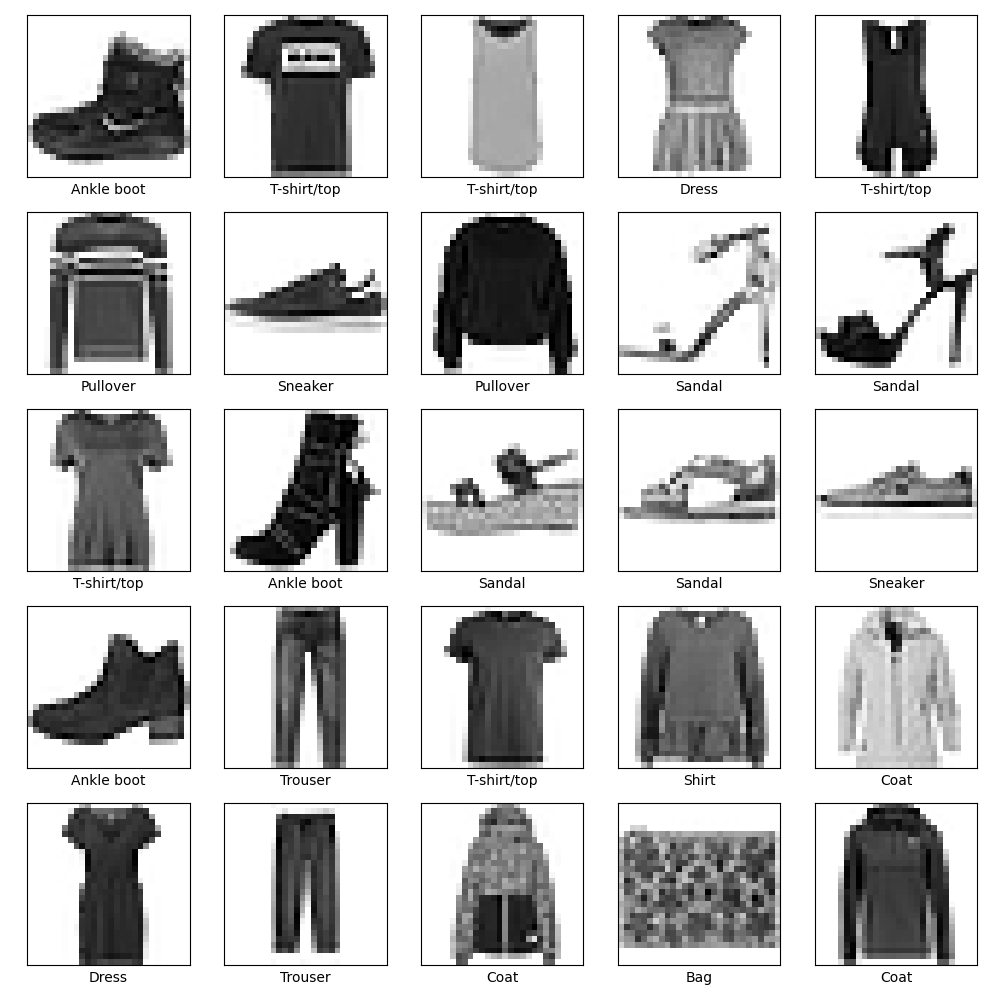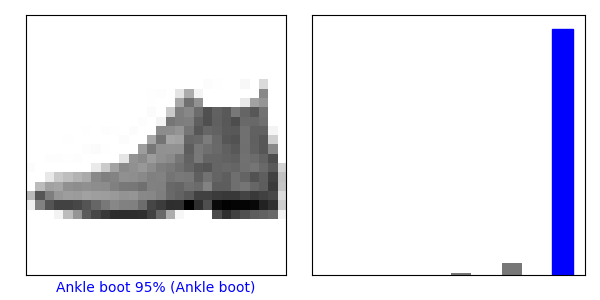参考文章:https://zhuanlan.zhihu.com/p/59506238
import tensorflow as tf import pandas as pd import numpy as np import matplotlib.pyplot as plt (train_image,train_label),(test_image,test_label) = tf.keras.datasets.fashion_mnist.load_data() class_names = ['T-shirt/top', 'Trouser', 'Pullover', 'Dress', 'Coat', 'Sandal', 'Shirt', 'Sneaker', 'Bag', 'Ankle boot'] train_image = train_image/255 test_image = test_image/255 #显示数据 plt.figure(figsize=(10,10)) for i in range(25): plt.subplot(5,5,i+1) plt.xticks([]) plt.yticks([]) plt.grid(False) plt.imshow(train_image[i], cmap=plt.cm.binary) plt.xlabel(class_names[train_label[i]]) plt.show() #构建网络 model = tf.keras.Sequential() model.add(tf.keras.layers.Flatten(input_shape=(28,28))) model.add(tf.keras.layers.Dense(128,activation='relu')) model.add(tf.keras.layers.Dense(10,activation='softmax')) #预测 model.compile(optimizer='adam',loss='sparse_categorical_crossentropy',metrics=['acc']) model.fit(train_image,train_label,epochs=5) print(model.evaluate(test_image,test_label)) predict = model.predict(test_image) print(np.argmax(predict[0])) print(test_label[0]) #显示单张图片 def plot_image(i, predictions_array, true_label, img): predictions_array, true_label, img = predictions_array[i], true_label[i], img[i] plt.grid(False) plt.xticks([]) plt.yticks([]) plt.imshow(img, cmap=plt.cm.binary) predicted_label = np.argmax(predictions_array) if predicted_label == true_label: color = 'blue' else: color = 'red' plt.xlabel("{} {:2.0f}% ({})".format(class_names[predicted_label], 100*np.max(predictions_array), class_names[true_label]), color=color) #显示数组全部图片 def plot_value_array(i, predictions_array, true_label): predictions_array, true_label = predictions_array[i], true_label[i] plt.grid(False) plt.xticks([]) plt.yticks([]) thisplot = plt.bar(range(10), predictions_array, color="#777777") plt.ylim([0, 1]) predicted_label = np.argmax(predictions_array) thisplot[predicted_label].set_color('red') thisplot[true_label].set_color('blue') i = 0 plt.figure(figsize=(6,3)) plt.subplot(1,2,1) plot_image(i, predict, test_label, test_image) plt.subplot(1,2,2) plot_value_array(i, predict, test_label) plt.show() #可视化结果 num_rows = 5 num_cols = 3 num_images = num_rows*num_cols plt.figure(figsize=(2*2*num_cols, 2*num_rows)) for i in range(num_images): plt.subplot(num_rows, 2*num_cols, 2*i+1) plot_image(i, predict, test_label, test_image) plt.subplot(num_rows, 2*num_cols, 2*i+2) plot_value_array(i, predict, test_label) plt.show() img = test_image[0] img = (np.expand_dims(img,0)) print(img.shape) predictions_single = model.predict(img) print(predictions_single) plot_value_array(0, predictions_single, test_label) _ = plt.xticks(range(10), class_names, rotation=45) (1, 28, 28)


